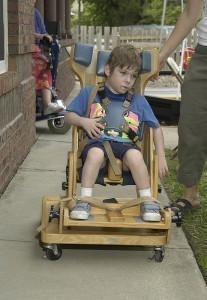Mad Cow Disease
Mad cow disease or Bovine Spongiform Encephalopathy (BSE) is a fatal neurodegenerative disease found in cattle that leads to a spongy degeneration of the brain and spinal chord. The incubation period is considerably long and affects adult cattle. All breeds are vulnerable to getting the disease. As the disease progresses, the animal is likely to behave in an odd manner including having an inability to stand because of irreversible brain degeneration. The disease appeared fairly recently and has been determined to have begun because cattle were being fed the remains of other infected animals, mainly sheep and other cattle. However, the true origin of the disease has still not been discovered.
Mad cow disease can be transmitted to humans in the form of a new variant Creutzfeldt-Jakob disease or vCJD. It is transmitted to humans when infected meat from cattle is consumed by them. Unfortunately, cooking the meat does not necessarily destroy the prion as it is able to survive even relatively high temperatures. Prion refers to the abnormal protein in the brain that can cause vCJD. Due to its presence, the cells in the brain begin to degenerate and eventually, it begins to have a sponge-like appearance. It has been responsible for almost two hundred deaths worldwide with the majority of deaths occurring in Britain.
Causes of Mad Cow Disease
As mentioned earlier, research is still being conducted to find the cause of mad cow disease. Having said that, it is believed that the consumption of infected meat can lead to this disease. Studies are being conducted to determine if heredity or genetic factors offer protection or make animals more susceptible to this disease. Creutzfeldt-Jakob disease is a prion disease meaning that it is caused by an infection with a prion (a misfolded protein) which is neither bacterial or viral in origin. Research is being conducted in this regard also to find the actual origin of this disease. A possible cause is the consumption of infected meat. 
Symptoms of Mad Cow Disease
The incubation period of mad cow disease is considerably long.
Some of the symptoms of mad cow disease when manifested in animals include:
- odd behavior and change in behavioral patterns
- uncoordinated movements
- inability to stand or walk
- lack of appetite
The symptoms manifested in human beings include:
- trouble with muscle control
- memory related problems
- muscle spasms
- loss of coordination / imbalance
- hallucinations
- dementia
The disease may have varying duration periods, however, the sporadic forms of the disease tend to have a relatively shorter incubation period and cause more rapid degeneration of the brain and spinal cord tissue.
The symptoms manifest themselves as a result of nerve cell death, related to the accumulation of prions. It has been observed that when viewed under a microscope, the brain tissue removed from persons afflicted with the disease, contains many tiny holes in place of the nerve cells that have died. The brain tissue will be sponge-like because of the progressive deterioration.
Treatment For Mad Cow Disease
There is no cure for vCDJ and it is usually fatal within months or years after the onset of symptoms. Treatment may be given to alleviate some of the associated symptoms but this will not slow or prevent the progress of the disease. Tests are being conducted in laboratories and ongoing research is being conducted to determine the causes of prions in animals.
Preventive Measures
The following preventive measures can be taken to avoid getting afflicted with the mad cow disease.
- Avoid the consumption of meat that contains portions of the spinal cord or brain tissue.
- Switch to eating poultry or fish or if you can, try to make the switch to a vegetarian diet.
- You should be extra cautious while traveling to countries where mad cow disease has already been detected. Some of these countries include United Kingdom, Portugal, Spain and Europe. It is also best to avoid having blood transfusions while traveling overseas.






